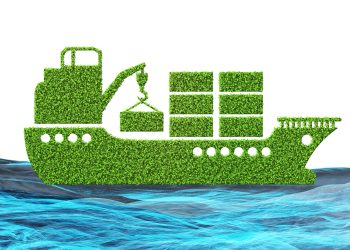The Port of Rotterdam announced it has become the fifth partner in North Sea Wind Power Hub-Consortium, where it will join forces with four electricity and gas grid companies, in order to continue their studies into the development of a large-scale, sustainable European energy system in the North Sea.
The consortium is so far comprised by TenneT TSO B.V. (Netherlands), Energinet (Denmark), TenneT TSO GmbH (Germany) and Gasunie (Netherlands).
According to the port, the collaboration is important for the development of a North Sea Wind Power Hub from 2030 onward, which will make a major contribution towards achieving the objectives of the Paris climate change agreement. The EU’s climate change objectives will require a significant development of offshore wind energy capacity in the North Sea. The deployment estimates range from 70 GW to 150 GW of offshore wind in the North Sea in 2040. A specific scenario conducted by the consortium which is based on the COP21 Paris Agreement commitment estimates 180 GW offshore wind capacity by 2045 in the North Sea.
Allard Castelein, CEO, Port of Rotterdam, noted: “Industry needs sustainable electricity and hydrogen if it is to meet the climate change targets of the Paris Agreement. The concept of a North Sea Wind Power Hub is an appealing prospect for the development of a large-scale, sustainable energy system in the North Sea.”
As sustainability is a major area of concern for European strategy, the aims of the consortium are to make the European climate and energy objectives feasible and affordable.
The vision starts from a stepwise development with bi-national hybrid connections and builds towards an accelerated roll-out facilitated by large scale (10-30 GW) offshore wind collection hubs feeding and connecting multiple North Sea countries. Central to this vision is the construction of one or more so-called ‘Power Link Islands’ or hubs with interconnections to the countries bordering the North Sea.
A Power Link Island will be able to facilitate the distribution and transmission of wind-generated electricity via direct-current connections to the North Sea countries (the Netherlands, Belgium, the United Kingdom, Norway, Germany and Denmark). These ‘Wind Connectors’ will not only transmit wind power from the wind farms to the hub/island, but will simultaneously serve as interconnectors between the energy markets of the aforementioned countries, enabling them to trade electricity across their borders, the port explained.
In a nutshell, an island could fulfill the following purposes:
- Cost-effective alternative for large offshore converter platforms,
- Work island for wind farm developers and maintenance activities,
- Hub for collecting alternating current from surrounding wind farms and interconnecting the surrounding countries using high-capacity direct-current ‘electricity highways’,
- Converting electricity to gas (such as hydrogen).

































































